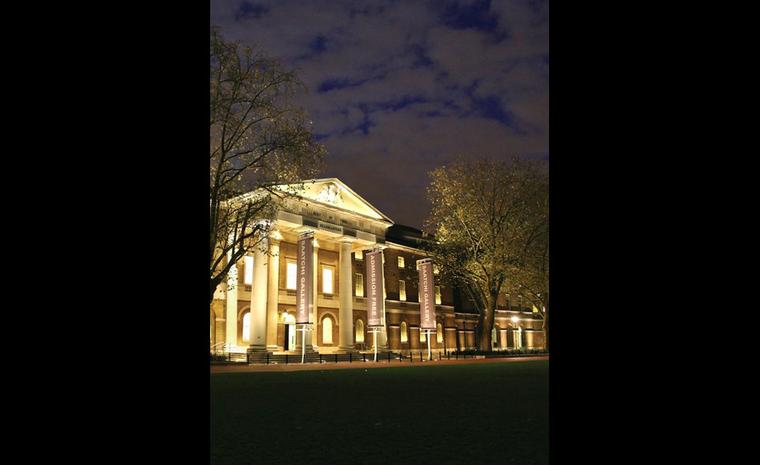Transcript
|Maria Doulton:SalonQP, now in its third year, is the only watch show in the UK, and it brings together some 40 different watch brands. There are small companies that maybe make 10, 20, 30 watches a year, to the big names that you'll all recognise. What they do here is they show their latest products to those who love watches.
Maria Doulton:Hello, and we're at SalonQP at the Saatchi Gallery in London, and with me is founder of SalonQP, James Gurney. James Gurney is going to tell us what is so special about SalonQP.
James Gurney:What's special is the watches on show. We've got a range of brands from Cartier through to Bremont and TAG Heuer and Roger Smith. It's a really exciting range from TAG Heuer to the really contemporary, kind of traditional.
I think what we have here is the best of modern watchmaking under one roof.
Maria Doulton:The makers themselves?
James Gurney:The makers themselves. One thing that we want to do is give people a chance, go straight to the source to actually talk to watchmakers and ask the questions they want answered. That's what it's all about.
Maria Doulton:It's Switzerland in England?
James Gurney:Switzerland in England, indeed.
Maria Doulton:Harry Winston have chosen the SalonQP to launch a whole new collection of watches called Ocean Sport, and you'll see they're quite sporty, for Harry Winston. What's interesting about this watch is that it's made out of material called Zalium.
Now, Zalium is a zirconium alloy that is usually used in the aerospace industry and never before in the watch industry, and Harry Winston have exclusive use of this material.
The collection starts at £10,000 and it's got both men's and women's watches, and what Zalium adds to the watch is the fact that's it's, believe it or not, stronger than titanium. It's lighter than stainless steel, it's non-corrosive and therefore non-allergenic and scratch-proof.
This women's chronograph I think you'll agree is quite a smart looking watch.
We're with Cartier and with me is Nicholas Streff who can explain to us what this watch is.
Nicholas Streff:This piece is a new solution to avoid the effects of gravity. We all know that Abraham-Louis Breguet invented the tourbillon in 1801, and I would say Carole Forestier thought it was this piece as the only part of the movement, which is the micro motor in a watch, which stays at the same position.
We use this part of the movement to place the escapement of the watch on this part. That means the escapement will stay at the same position even if you turn the watch like a rotor. So the effects of the rotor are totally constant.
Maria Doulton:So it's bit like a marine chronometer that counters movement by swaying in the other direction.
Nicholas Streff:Yes. And back up.
Maria Doulton:This remarkable clock is the work of inventor John C Taylor, who came up with the idea of the chronophage, which literally eats time. The beast that sits on top of the dial gobbles up every passing minute as it goes by.
Now we're at Piaget and I'm with Nicholas Mohs, who's going to tell us a little bit about why the ultra-thin movement has been so popular with Piaget.
Nicholas Mohs:For us the ultra-thin movement has always been very, very important because it's something we've been doing for a very long time now, always trying to keep it very, very elegant, very, very thin.
So this is the Altiplano 43mm. Why we call it 43, because it's a 43mm case size. It has a double record: it's the thinnest automatic movement as well as the thinnest automatic watch. So it's really a celebration of Piaget's know-how in ultra-thin movements and a modern incarnation featuring the classical timeless Altiplano piece but in a really modern execution, which is the Altiplano 43.
Maria Doulton:SalonQP isn't just about looking at watches, you can even have a go at putting one together yourself. Jaeger-LeCoultre has brought over 10 workbenches and all the necessary equipment for you to learn how to put together your own escapement.
Now I'm with Roger Smith and Roger Smith is quite a remarkable man because he is one of the very few British watchmakers who actually makes watches in the country.
Roger also worked with Daniels, George Daniels, who died recently, and we've got one of his pieces in front of us. Can you tell us what it is, Roger?
Roger Smith:Yes. This is one of his earliest pieces, and it was made in the early 1970s. What's unusual about this is that when George was beginning to make his very first pieces in the late 1960s, there was no watch industry to support him, so he had to learn every single skill that was involved in the creation of a handmade watch. Every single component within that watch was handmade by George.
He turned watchmaking into a real art form, particularly at this level, and as I say, it's not just watchmaking, it's trying to create works of art as George did, and I'm here trying to continue what he's already done and what an amazing legacy that he's left for everyone.





